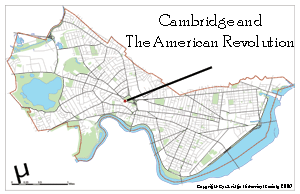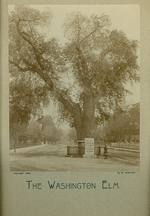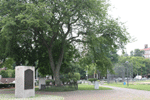Blog post #6
On July 3, 1775, legend has it that George Washington took command of the Continental Army. This was depicted through art pieces, poetry, etc., but later became known more publicly. The Washington Elm tree was a symbol of not just revolutionary history but also the city of Cambridges past. During the 1820's, Everett spoke up about the elm tree and coincidentally Cambridge's population nearly doubled throughout that decade and by the time 1845 came around the population nearly doubled again! This tree then became known as a relic, but not only for its significance to the Revolutionary war, but also because it is seen as a representation of the town's founding. The myths following the Washington Elm spread throughout many decades and it became enclosed by a fenced area that you can somewhat see in the tree picture attached down below from the before picture in order to protect its significance. Rev. Charles W. Upham of Salem even recognized the tree in his speech on Independence Day in 1842. It was also mentioned in many books, poems, and articles such as the article The Pictorial Field-Book of the Revolution.
 Location of the Washington Elm tree on a map
Location of the Washington Elm tree on a map

 The tree now vs. before
The tree now vs. before historycambridge.org/Cambridge-Revolution/Washington%20Elm.html
Comments
Post a Comment